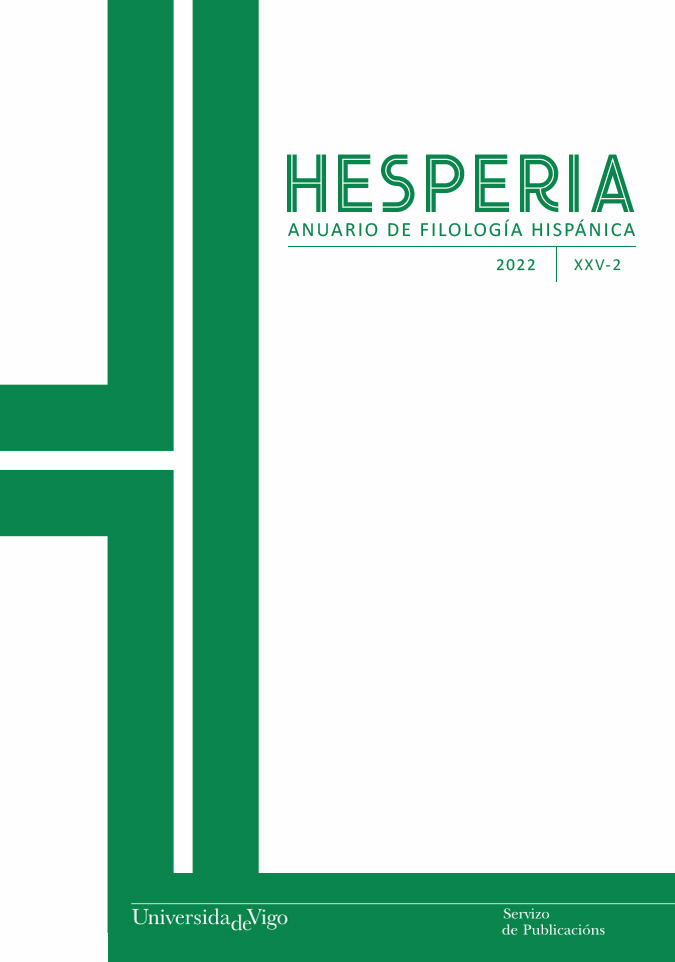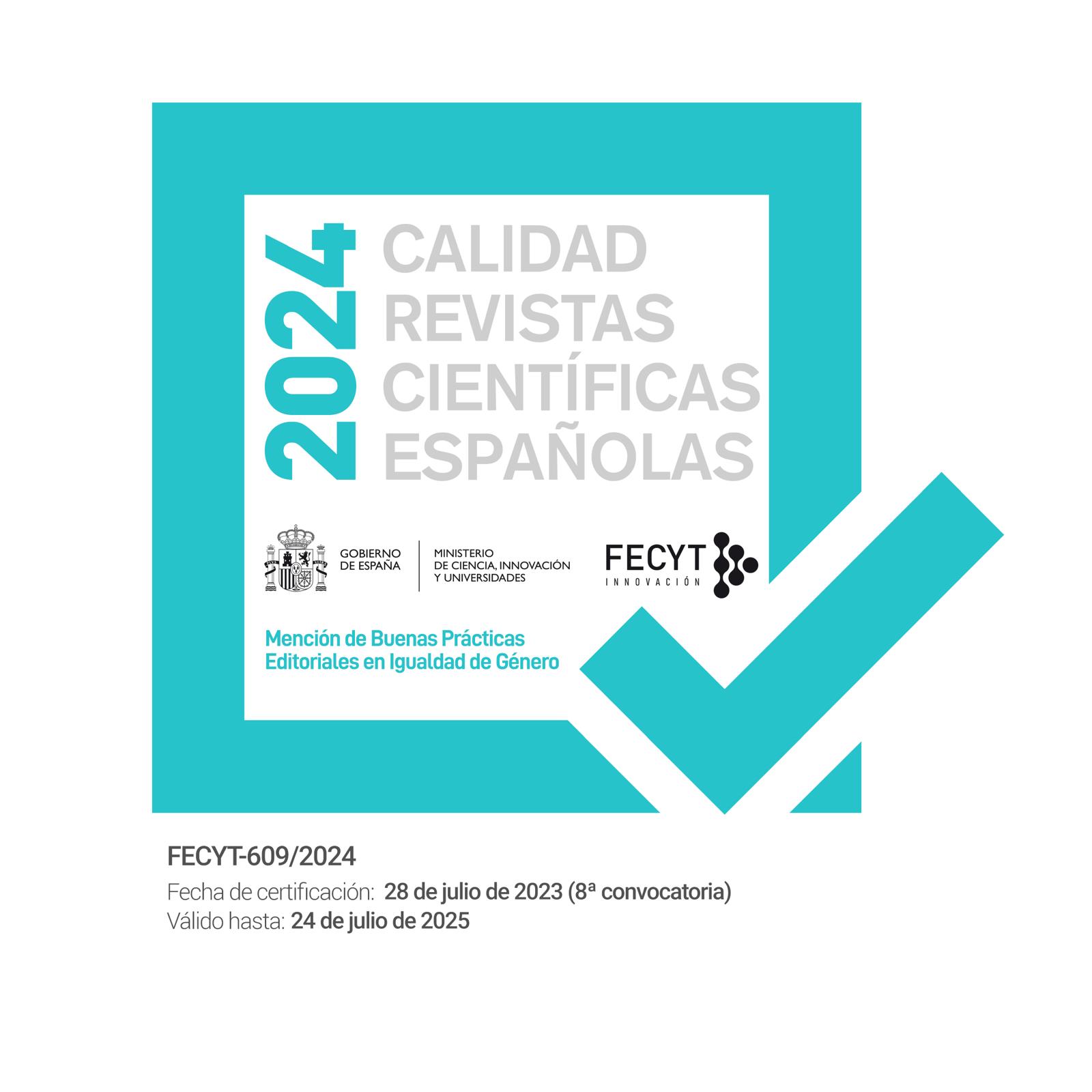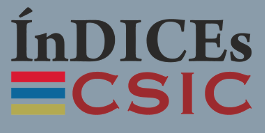Factors involving the loss of dictionary users
DOI:
https://doi.org/10.35869/hafh.v25i2.4321Keywords:
lexicography, user perspective, digitalizationAbstract
Throughout history, lexicographic craft and products have evolved thanks to technology. The alliance strengthened with the incorporation of computers into dictionary compilation in the last decades of the XX century. Its benefit, though, stopped there and were not felt much by the finaluser, except for some Asian countries, where portable electronic dictionaries (PED) were further developed and popularized. This situation changed definitvely when internet access and mobile devices became ubiquitous worldwide. Users, immersed in the new digital environment, modifiedtheir behavior towards reference tools, which also had increased in number and types. Nowadays, it is possible to witness how this new generation of users has taken command of such tools and consequently adjusted their habits to them. For sure, they have been able to leave behind the hardness of a printed book look-up, but at the price of the dictionary itself. The purpose of this paper is to explore how users changed the values they held about dictionaries due to digitalization. To this end, the transition from paper to digital environments has been divided into three chronological periods, and qualities attributed to dictionaries are separated into those that lead to purchasing them and those that lead to consulting them. For each period, technical advances in electronic and digital dictionaries were recapped alongside research studies about user attitudes, beliefs, and consultation habits. As a result of such an overview, it emerged a clear picture of how dictionaries lost value to the user’s eyes and have been replaced by other reference tools. Finally, albeit a secondary goal, the paper also pursues to highlight the portable electronic dictionary’s role in electronic lexicography, a fact that is too often forgotten because it was used in a few faraway countries.
Downloads
References
Boonmoh, A. y Nesi, H.(2008).A survey of dictionary use by Thai university staff and students, with special reference to pocket electronic dictionaries.Revista Horizontes de Lingüística Aplicada,6(2), 72-90.
Bothma, T. y Gouws, R. (2022). Information Needs and Contextualization in the Consultation Process of Dictionaries that are Linked to e-Texts. Lexikos, 32, 53-81.
Clifford, J., Merschel, L. y Munné, J. (2013). Surveying the landscape: What is the role of machine transla-tion in language learning? @tic. revista d’innovació educativa, 10, 108-121.
Collins, J. B. (2016). Changes in electronic dictionary usage patterns in the age of free online dictionaries: Implications for vocabulary acquisition.APU Journal of Language Research,1, 36-49.
Domínguez Vázquez, M. J. (2017). Portales y diccionarios multilingües electrónicos. En M.J. Domínguez y M.T. Sanmarco Bande (Eds.).Lexicografía y didáctica (pp. 177-201). Peter Lang.
Domínguez, M. J. y Valcárcel, C. (2015). Hábitos de uso de los diccionarios entre los estudiantes europeos: ¿nuevas tendencias? En Domínguez, M. J. et al. (eds.). Lexicografía de las lenguas románicas. Aproximaciones a la lexicografía moderna y contrastiva (pp. 165-190). De Gruyter.
Dziemianko, A. (2012). On the use(fulness) of paper and electronic dictionaries. En Granger, S. y Paquot, M. (eds.). Electronic lexicography (pp. 319-342). Oxford University Press.
Dziemianko, A. (2017). Dictionary form in decoding, encoding and retention: Further insights.ReCA-LL,29(3), 335-356.
Dziemianko, A. (2022). The usefulness of graphic illustrations in online dictionaries.ReCALL,34(2), 218-234.
Farber, A. y Turrero-García, M. (2020). Online Translators as pedagogical tolos. The FLTMag. https://fltma .com/online-translators-as-a-pedagogical-tool/
Fuertes-Olivera, P. A. y Tarp, S. (2014). Theory and practice of specialised online dictionaries. De Gruyter.
Fernández- Quesada, N. y Rodríguez-Rubio, S. (2022). La metalexicografía del siglo XXI: un estado de la cuestión. Círculo de Lingüística Aplicada a la Comunicación, 90, 125-135. https://dx.doi.org/10.5209/clac.81304
Gao, Yogwei. (2013). On the appification of dictionaries: from a Chinese perspective. En Kosem, Iztok et al. (coords.). Electronic lexicography in the 21st century: thinking outside the paper : proceedings of eLex 2013(17-19 Octubre 2013, Tallinn) (pp. 213-224). Institute for Applied Slovene Studies.
Gutiérrez Cuadrado, J. (2000). El diccionario Salamanca, cinco años después. En M.A. Martín Zorraquino y C. Díez Pelegrín (eds.). Norma y variación lingüísticas en la enseñanza del español a extranjeros: actas del XI Congreso Internacional ASELE. Zaragoza 13-16 de septiembre de 2000 (pp. 123-134). Universidad de Zaragoza.
Hernández, H. (2019). La lexicografía perceptiva y la perspectiva del destinatario del diccionario (una apro-ximación al estudio de las actitudes lingüísticas de los periodistas). En J.R. Sarmiento Guede y F. Vilches Vivancos (Coords.). Filología comunicación y otros estudios: Liber Amicorum en homenaje a Ramón Sarmiento González (pp. 19-37). Dickinson.
Holmer, L., Hult, A.K y Skoldberg, E. (2015). Spell check on the fly? On the use of a Sweeden dictionary app. En I. Kosem, M. Jakubícek, J. Kallasy S. Krek (eds.). Electronic lexicography in the 21st century: linking lexical data in the digital age. Proceedings of the eLex 2015 conference (pp. 356-371). Institute for Applied Slovene Studies.
Huan, F. y Tarp, S. (2021). Dictionaries integrated into English learning apps: critical comments and sugges-tions for improvements. Lexikos, 31, 68-92.
Kallas, J.; Koeva, S.; Langemets, M.; Tiberius, C. y Kosem, I. (2019). Lexicographic practices in Europe: Results of the ELEXIS Survey on user needs. En I. Kosem et al. (eds.). 2019.Electronic lexicography in the 21st century. Proceedings of the eLex 2019 conference.1-3 October 2019, Sintra, Portugal (pp. 519-536). Lexical Computing CZ, s.r.o.
Knezevic, L., Halupka-Resetar, S., Miskeljin, I., Milic, Mira (2021). Millennials as Dictionary Users: A Study of Dictionary Use Habits of Serbian EFL Students. SAGE Open, 11(2), Apr-Jun 2021. Doi: 10.1177/21582440211008422
Kobayashi, C. (2008). The use of pocket electronic and printed dictionaries: A mixed-method study. En K. Bradford Wattts, T. Muller y M. Swanson (eds.). JALT 2007. Conference Proceedings (pp. 769-783).The Japan Association for Language Teaching.
Kosem, I., Lew, R., Müller-Spitzer, C., Ribeiro-Silvera, M. y Wolfer, S. (2019). The image of the monolingual dictionary across Europe. Results of the European survey of dictionary use and culture. International Journal of Lexicography, 32-1, 92-114.
Lew, R. y Scrhyrver, M. (2014). Dictionary users in the digital revolution. International Journal of Lexicography, 27-4, 341-359.
Lew, R., Kazmierczak, R., Tomczak, E. y Leszkowicz, M. (2018). Competition of Definition and Pictorial Illustration for Dictionary Users’ Attention: An Eye-Tracking Study. InternationalJournal of Lexicography, 31- 1, pp 53-77.
Li, Q . (2019). Empirical research on pedagogical dictionary use in recent 30 years. Journal of Education and Learning, 8-6, 203-109.
Maldonado, C. (2019). Las investigaciones de mercado en lexicografía comercial: un aprendizaje para el mundo académico e investigador. Revista Internacional de Lenguas Extranjeras, 10, 101–118.
Méndez Santos, M.C. y Sala Caja, L. (2019). Estudio sobre los diccionarios monolingües del español en formato app. En C. Calvo Rigual y F. Robles Sabater (Coords.). La investigación en lexicografía hoy: diccionarios bilingües, lingüística y uso del diccionario (pp. 577-614). Universidad de Valencia.
Müller-Spitzer, C. y Kopeling, A. (2015). Requisitos y expectativas de un buen diccionario online. Resultados de estudios empíricos en la investigación sobre el uso de diccionarios con especial atención a los traductores. En M.J. Domínguez et al. (eds.). Lexicografía de las lenguas románicas. Aproximaciones a la lexicografía moderna y contrastiva (pp. 297-321). De Gruyter.
Nesi, H. (2016). The demand of users and the publishing world: printed or online, free or paid for? En P. Durkin (ed.). The Oxford handbook of lexicography (pp. 579-589). Oxford University Press.
Nomdedeu-Rull, A. (2019). Hábitos de consulta de diccionarios en estudiantes universitarios chinos de español.En C. Calvo Rigual y F. Robles Sabater (Coords.). La investigación en lexicografía hoy: diccionarios bilingües, lingüística y uso del diccionario (pp. 143-164). Universidad de Valencia.
Nomdedeu-Rull, A., Hernández, H., Maldonado, C. y Tarp, S. (2019). El estatus de la lexicografía. Nuevas y variadas respuestas a una antigua cuestión. En C. Calvo Rigual y F. Robles Sabater (Coords.). La investigación en lexicografía hoy: diccionarios bilingües, lingüística y uso del diccionario (pp. 699-733). Universidad de Valencia.
O’Neill, E. M. (2019). Online translator, dictionary, and search engine use among L2 students. CALL-EJ, 20-1, 154-177.
Prinsloo, D. (2021). Lexicographic treatement of salient features and challenges in the creation of paper and electronic dictionaries. En Z. Gavriilidou, L. Mitits L. y S. Kiosses S. (Eds.). Proceedings of XIX EURALEX: Lexicography for Inclusion, Vol. II (pp. 585-592). Democritus University of Thrace.
Real Academia Española (1803). Diccionario de la lengua castellana. Imprenta de la Viuda de don Joaquín Ibarra.
Real Academia Española (1899). Diccionario de la lengua castellana. (13ª ed.). Imprenta de los señores Hernando y compañía.
Real Academia Española (2014). Diccionario de la Lengua española (23ª ed). www.rae.es.
Roland, J. y Ozawa, S. (2009). The electronic dictionary in the language classroom: the view of language learners and teachers. En Euralex 2008 Proceedings (pp. 1311-1315). Universitat Pompeu Fabra.
Rundell, M. (2011). Many a mickle makes a muckle.Round table talk at eLex2011. En I. Kosem y K. Kosem (cords.).Electronic lexicography in the 21st century: New applications for new users (pp. 10-12). Institute for Applied Slovene Studies.
Rundell, M. (2013). Redefining the dictionary: From print to digital. I. Kernerman Dictionary News, 21, 5-7.
Rundell, M. (2014). Macmillan English Dictionary: The End of Print Slovenscina 2.0: empirical, applied and interdisciplinary research,2(2), 1-14.
Rundell, M. (2015). From print to digital: implications for dictionary policy and Lexicographic conventions. Lexikos, 25, 301-322.
Sala Caja, L. (2002). ¿De qué manera utilizan los diccionarios los estudiantes japoneses? The Journal of the Faculty of Foreign Studies, 34 ,195-212.
Sala Caja, L. (2015). Portable Electronic Dictionaries (PED) use in Spanish as second language students in Japan. En L. Lan et al. (eds.). The 9th International Conference of ASIALEX: Words, Dictionaries and Corpora: Innovation in reference science, Hong Kong, 25-27 June 2015 (pp. 450-459). Hong Kong Polytechnic University.
Seco, M., Andrés, O. y Ramos, G. (1999).Diccionario del español actual. Aguilar.
Seco, M. (2003). El laberinto de las palabras: introducción a los diccionarios (y II). Revista de la Fundación Juan March, 327, 28-33.
Sumner, I. (1967). The Random House of the English language. The unabridged edition by Jess Stein. The English Journal, 302-204.
Tarp, S. [RAEInforma] (7 de noviembre de 2014). Sven Tarp. Simposio internacional. El futuro de los dic-cionarios en la era digital [Archivo de vídeo]. Youtube. https://www.youtube.com/watch?v=k-cBW-UXSd68 .
Tarp, S. (2020). A dangerous cocktail: Databases, information techniques and lack of visions.En M.J. Domínguez Vázquez, M. Mirazo y C. Varcálcel (eds.). Studies on Multilingual Lexicography, 47-66. De Gruyter.
Tarp, S. (2021). La comunicación dirigida al usuario de diccionarios de internet. En L. Ruiz Miyares et al. (eds.) Contribuciones a la Lingüística y a la Comunicación Social: Tributo a Vitelio Ruíz Hernández (pp. 87.92). Ediciones de Lingüística aplicada.
Tarp, S. y Gouws, R. (2020). Reference skills or human-centered design: towards a new lexicographical culture. Lexikos, 30, 470-498)
Tono, Y. (2006). English bilingual lexicography in Japan: meeting new serious challenges. En JACET Society of English Lexicography (ed.). English Lexicography in Japan. (pp. 18-27). Taishukan.















